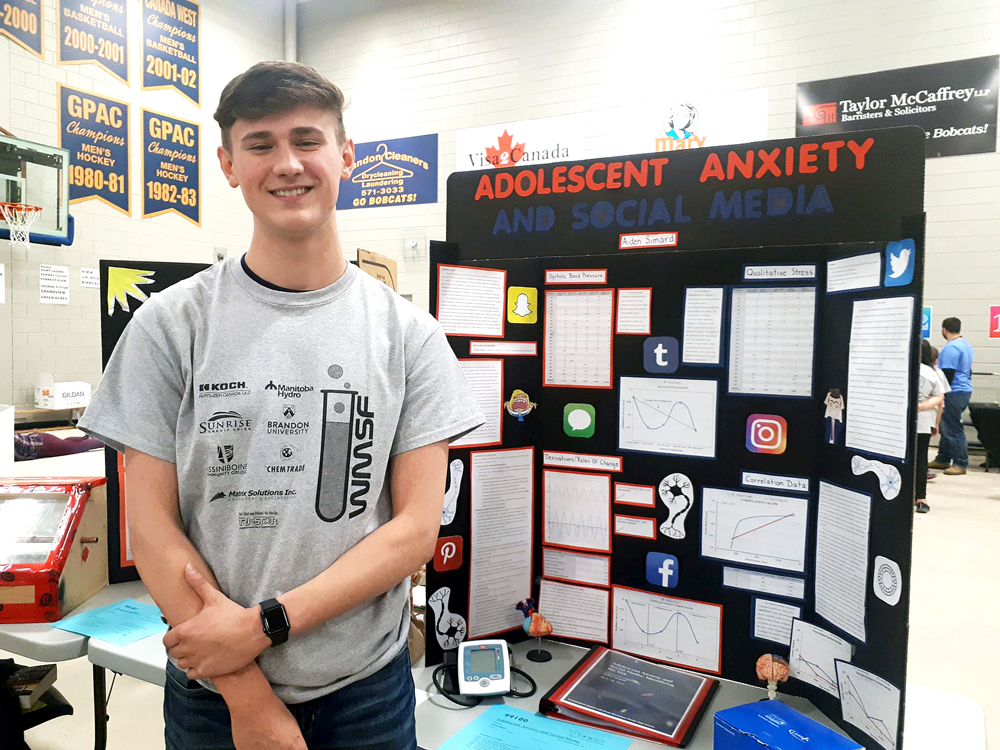Teen links social media to mental health risks
Advertisement
Read this article for free:
or
Already have an account? Log in here »
We need your support!
Local journalism needs your support!
As we navigate through unprecedented times, our journalists are working harder than ever to bring you the latest local updates to keep you safe and informed.
Now, more than ever, we need your support.
Starting at $15.99 plus taxes every four weeks you can access your Brandon Sun online and full access to all content as it appears on our website.
Subscribe Nowor call circulation directly at (204) 727-0527.
Your pledge helps to ensure we provide the news that matters most to your community!
To continue reading, please subscribe:
Add Brandon Sun access to your Free Press subscription for only an additional
$1 for the first 4 weeks*
*Your next subscription payment will increase by $1.00 and you will be charged $20.00 plus GST for four weeks. After four weeks, your payment will increase to $24.00 plus GST every four weeks.
Read unlimited articles for free today:
or
Already have an account? Log in here »
Hey there, time traveller!
This article was published 10/04/2019 (2400 days ago), so information in it may no longer be current.
Engaging in social media might not be the healthiest of pastimes, according to a young researcher’s recent study.
Aiden Simard, a Grade 12 student at Neelin High School, spent six weeks carrying out a research study that focuses on the connection between social media and anxiety in adolescents.
“Viewing that there’s an increasing epidemic in adolescent anxiety and stress as well as an increase in social media, I wanted to see whether or not these two things were increasing in tandem,” Simard said.

He was one of approximately 500 grades 1 through 12 students in the Westman area whose projects were displayed at the Western Manitoba Science Fair during the Brandon University Healthy Living Centre on Tuesday.
Finalists will go on to the Canada-Wide Science Fair next month in Fredericton, N.B.
There has already been interest in his findings from professors at Brandon University, he said, including one who wants to share his research with their class and another wants to get it published online.
On top of that, the University of British Columbia has offered him $3,000 to continue his research.
For six weeks, Simard monitored participants’ stress levels based on qualitative stress scores, systolic blood pressure and cortisol levels, which is a hormone released due to stress. He limited participants’ use of social media throughout the process, starting with an hour per day for the first week, decreasing their exposure to 30 minutes the next week and so on.
After reading their blood pressure, qualitative stress and cortisol levels, he concluded that social media was having a negative effect on adolescent mental health.
“On average, once participants had reduced social media, their stress scores decreased almost 50 per cent, the cortisol levels in the hormones in their blood decreased almost 50 per cent and same with blood pressure,” he said. It was all linked together.”
Although participants’ stress levels ultimately dropped, there was an increase at 1.4 weeks. That’s what Simard likes to call the withdrawal period. Once participants reached the third week, the adaptation period kicked in and their stress levels were much lower, according to the data he collected.
To figure out cortisol levels, he used a cortisol testing kit and sent the samples off to the lab so they could test them.
The classmates he used for participants in the study were initially hesitant, but they ended up coming around.
“They’re glad that they were a part of it,” he said. “They are so much more aware of it and way social media affects them personally.”
None of them are sticking to the 10 minutes per day like they were at certain points of the experiment, he said, but it’s not nearly as high as it was before.
Now that he has the data, it’s about future impacts and what they can do with the information to make sure people are aware of the negative impacts of social media.
“Everybody has a phone in their pocket,” Simard said.
“100 years ago, everybody had a pack of cigarettes in their pocket. Before the media and before the government made the population aware of all the negative impacts it had on you, people would smoke every day, and same thing here. People aren’t aware of the negative impacts social media has on mental health and physiological health, and until people are made aware nothing is going to be changed.”

» mverge@brandonsun.com
» Twitter: @Melverge5
Youngster finds green-minded way to clean
A Grade 7 student has found a more environmentally friendly way to clean up household stains.
Paige Oversby presented her science project at the Science Fair at the Brandon University Healthy Living Centre on Tuesday. Her findings were that homemade, natural cleaners worked better than OxiClean for clearing up spills.
“I thought the OxiClean would work better than most of the homemade cleaners, but it was actually way lower than the homemade cleaners,” Oversby said. “It will definitely help the environment because there’s no waste from them, there’s no extra containers you have to dispose of after.”
She had three different cleansers — one made with lemon juice, vinegar and water, another made with lavender essential oil, vinegar and water, and another with rosemary, orange rinds, vinegar and water.
Her classmates enjoyed it, too. They found that the cleaners was edible, with no trips to the hospital afterward.
“Kids in our grade were actually eating the cleaners and they said they tasted like salad dressing,” she said, adding that as such it’s safe for pets who might consume the products.
“(Our dog), she comes in our house sometimes and she licks everything.”
» The Brandon Sun
